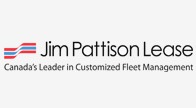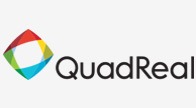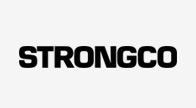Regulation-based signage like the ADA and AODA will continue to have an impact on businesses. Accessibility is starting to become the law in most provinces, and some cities have already implemented bylaws requiring signage for the blind and visually impaired.
SSK Signs is your source for ADA and AODA custom signs Toronto. We wanted to give you an overview of these regulations, what types of signs and places they apply to, and ultimately what it all means for your business.
In 1990, the U.S. Congress passed the Americans with Disabilities Act (ADA). Decades in the making, the Act was an historic landmark in progressive and inclusive legislation. While it’s been revised and expanded many times over the years, the basic principle of the ADA remains unchanged: all persons should have equal access to resources and buildings, and businesses must make the necessary accommodations. Custom ADA signs are one of these accommodations.
In Ontario, the Accessibility for Ontarians with Disabilities Act (AODA) was enacted in 2005. Many municipalities have also created their own by-laws and local requirements for accessibility, including custom ADA signs.
Virtually any business can benefit from improving accessibility for their visitors, customers, and staff. Some of the most common types of custom ADA signs include:
- Raised text. These signs feature regular Roman characters, but the characters are raised off the surface of the sign. This tactile feedback allows those with visual impairments to better read the characters.
- Icons and graphics. Universal symbols for facilities such as stairs and bathrooms quickly communicate key information to those who may not be able to read alphabetical characters. They can also be of great use in case of a language barrier.
- Braille signs. Braille office signs is an entire system of characters that’s designed to be read through touch alone. It’s a critical tool for people with substantial or total visual impairment.
Significance of ADA Signs
Whether you are just starting up or running a well-established organization, it is vital for a business owner to be fully aware of the ADA guidelines. It shows that you are following the law and do not discriminate against people facing disabilities. The government conducts regular checks to ensure that all required signs are following the AODA guidelines. If found otherwise, you may get a warning to replace the signs first and failing to act upon that can attract hefty penalties.
On the other hand, if your office or store is well marked with custom AODA signs, it makes it convenient for the visitors to navigate. This also provides a business opportunity as people facing disabilities often try to shop from places where they can move around with ease. This also makes a positive impact on your brand and the customers see your brand as reliable and trustworthy.
ADA/AODA Signs are used in common spaces, such as:
- Lobbies and reception areas.
- Office, conference room, and boardroom doors.
- Open common areas, such as food courts.
- Elevators and stairwells.
- Hotel/apartment doors.
Do All Business Signs Need To Be ADA Compliant?
That’s not the case. There are many signs in a facility that need not follow the ADA guidelines. Signs that display company name and logo, address signs, signs for advertising purposes, signs which are not placed in public areas, emergency exit signs, temporary signs are few signs that do not need to follow ADA guidelines. However, for a better interior décor, it is recommended to keep all interior signs the same to have a thematic effect.
We are your source for braille signs and custom signs, Toronto and the surrounding areas. SSK Signs is located in Mississauga and supports businesses in the GTA including Vaughan, Toronto, Etobicoke, Mississauga, Brampton, and Oakville.
FAQ’s
Where are ADA signs required?
It’s a good idea to have ADA signs at every doorway. In particular, spaces in your facility that are permanent, such as restrooms and numbered rooms, or any space that is used for a specific purpose need to have ADA signs. Rooms that rotate in terms of use are not required to have ADA signs, but it is still recommended.
What makes a sign ADA compliant?
ADA-compliant signs should have a non-glare finish, a high level of contrast, certain font and character properties, and braille text, and be mounted according to ADA regulations. The best way to ensure your signs are compliant is to work with an experienced sign maker that can guide you through the requirements.
When was the ADA enacted?
ADA was signed into law in July of 1990 as civil rights legislation. It has experienced some updates in the last 30 years but the goal to provide equal access to everyone remains the same. Should you have any questions about ensuring your space is ADA compliant, please reach out to us at SSK Signs.
Do all signs need to be AODA-compliant?
No, technically not all signs need to be AODA-compliant. For example, temporary signs may not need to follow AODA guidelines. However, as a responsible business owner, having all your signs be AODA-compliant is the right thing to do and supports all customers and visitors who may visit your facility.
Where do ADA exit signs need to be placed?
An ADA-compliant sign should be located on the latch side of a door. If there happen to be double doors, but only one side is used, the ADA sign should be placed on the inactive side. If there is no room on the latch side wall, the sign can be mounted on the nearest adjacent wall.
What is the minimum ADA door width requirement?
In order to meet ADA standards, a clear width of a minimum of 32 inches and a maximum of 48 inches must be present for all doors. Doors must be able to open to 90 degrees. These measurements ensure that your doorways will be accessible to those using a wheelchair for mobility.
What is an ADA bathroom sign?
ADA bathroom and restroom signs play an important role in any public facility. They make it easy to know where accessible bathrooms can be found, without difficulty. As per other ADA sign requirements, bathroom signs need to follow the same regulations in terms of contrast, glare, character design, and mounting directions.
What are ADA braille sign height requirements?
The optimum viewing height for braille signs was determined by considering people standing up as well as those using wheelchairs. Braille signs should be installed at a height between 48 and 60 inches from the floor. You are also required to leave a minimum of 3/8 inch clearance on all sides of braille text.
How small can an ADA sign be?
Since ADA signs have a requirement to have the text of a certain size, the size of your sign may depend on how much text you have to include. In addition, pictographs can also be required, which will increase the size of your sign. Consult with our team at SSK Signs to determine the ideal sign size to suit your needs.


























